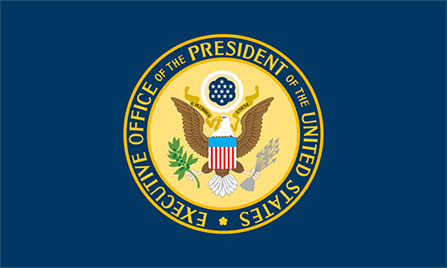Governing by surprise is not a recipe for success

New presidential administrations, particularly Republican ones, like to say that they’re going to run government more like a business. Whether this is possible or even desirable, we now have a business executive in the Oval Office who can test this proposition—and the initial reviews are mixed.
The Trump administration has raced out of the gate with a “shock and awe” blizzard of policy announcements. All of this is designed to keep Democrats and the media on their heels. The problem, however, is that this approach has also caught Trump’s own cabinet off guard.
Coordination is the hallmark of successful administrations. The Obama White House was known for its “no drama” ethos. Less well-known was our “no surprises” edict. When incoming White House Chief of Staff Rahm Emanuel told me in 2008 that I would be in charge of managing the cabinet, he explained my job responsibilities as: "No surprises. I never want to open the newspaper and see something happening in the government that I didn't know about in advance."
What Rahm meant is that the White House sets the policy agenda and frames the top-line message, and the cabinet offers complementary policies and amplifies the message. Above all, the White House should never, ever be caught off guard by something coming out of an agency.
But Rahm also understood that the “no surprises” edict goes both ways. The cabinet is the president’s team—they run the daily operations of the government and advise him on critical policy decisions. So whenever possible, Secretaries and their departments should not be surprised by announcements coming out of the White House.
This practice wasn’t just a courtesy. Much of the expertise of the federal government lies deep in its agencies, and it would have been foolish not to seek out that experience and wisdom. Working through the intricacies of policy with agency experts and lawyers was not always fun, but it did ensure that everyone understood the policy and how it was to be implemented.
Early in administrations, there are always surprises when the staff is new. The frequency drops with experience and the development of policy processes. However, given Donald Trump’s “outsider” style of governing, there is every reason to believe that unpredictability will be the rule over the next four years.
We now have a president who has used his Twitter account to slap down House Republicans, John McCain, and major corporations (and that’s the abbreviated list). Given the number of times that Trump’s nominees have already contradicted his positions in their confirmation hearings, it’s only a matter of time before cabinet members find their policy positions undercut by an early morning tweet.
As a CEO, Trump touted the virtues of being “a one-man army…You must plan and execute your plan alone.” While it’s debatable whether this strategy works in business, it almost certainly doesn’t work in government.
Already, we have learned that the Defense Secretary and CIA Director were unaware of a draft order on torture. The State Department was not consulted on the executive action on the Keystone pipeline. And the Secretary of Homeland Security was being briefed on the travel ban just as the policy document was being signed in the White House.
The president is the boss and the ultimate decisionmaker. But no secretary wants to be blindsided by a White House announcement. This leads to bruised egos, infighting, and leaks. And more importantly, it leads to bad policy.
At an Obama administration retreat in 2009, I recall former Defense Secretary Robert Gates explaining: “The White House can announce whatever policy it wants, but only agencies can implement it.” As a cautionary note, he added, “The speed and thoroughness of the implementation is directly related to whether agencies have been consulted on the policy and buy into it.”
The impact of keeping agencies out of the loop was most apparent in the Trump travel ban, which apparently was not discussed with the individuals chosen to lead the Departments of Defense, State, and Homeland Security. Nor was the directive cleared through the usual interagency policy process. Predictably, the lack of input from the implementing agencies led to confusion among border patrol agents, chaos for travelers landing at U.S. airports, and questions about the legality of the ban.
One Trump administration source explained: “These executive orders are done by a very insular group within the White House with little to no interaction with the cabinet-level agencies and no coordination…When you’re not thinking through what the consequences are, you’re jeopardizing real people. People could die.”
With the executive orders announced so far, the White House has controlled the timing and content. However, much of what presidents have to deal with can’t be anticipated in advance. Trump’s “go it alone” approach will be seriously tested when he has to quickly marshal the resources of the federal government to confront a foreign policy crisis overseas or a natural disaster at home.
As Donald Trump has learned in his first week in office, splashy announcements are easy to make. But if this dynamic continues, the new president will find it hard to maintain the loyalty of his cabinet and even harder to make lasting policy changes or deal with a crisis.
Chris Lu is a Senior Fellow at the Miller Center. He served in the Obama Administration as the White House Cabinet Secretary and Deputy Secretary of Labor. You can follow him on Twitter: @ChrisLu44